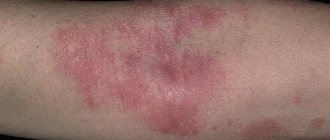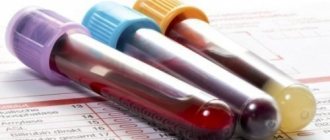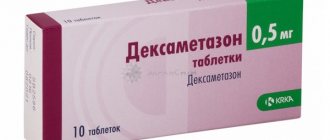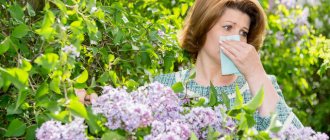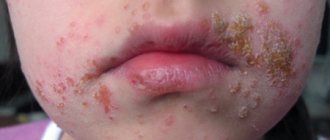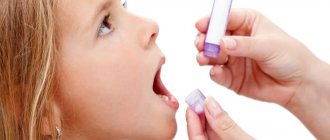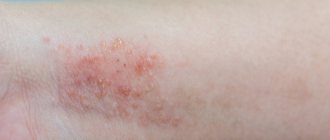A lot of inconvenience and discomfort awaits those who have an allergy on their hands in the form of red spots. Treatment of this disease should be carried out under medical supervision, using the right means. Manifestations of allergies can look different, most often these are red spots or rashes, itching, swelling and flaking are found on the lesions. Such problems cannot be ignored. It is necessary to contact a specialist, requiring a detailed examination of the body, making a diagnosis and prescribing adequate therapy.
What is an allergic rash?
An allergic rash is an inflammatory reaction of the skin. It is the result of the development of an allergic reaction in the body. Rashes are a consequence of an immunopathological process, which is expressed by the hypersensitivity of the body’s immune system. This is how the body reacts to a stimulus.
The incidence rate increases every year. There is a theory that this is the result of an improved quality of life. Excessive personal hygiene prevents the body from coming into contact with many antigens. The immune system is not working at full capacity. This theory is being actively studied and is currently considered unconfirmed.
An allergic rash on the body can also be the result of a malfunction of the immune system, in which irritants will form in the body itself. Such components are called autoallergens.
Mechanism of reaction
Types of allergic rashes have a single development mechanism, which is conventionally divided into several stages. The manifestation does not depend on the type of reaction. The mechanism of allergy manifestation is described in the table by stages.
Despite the general mechanism of development, all types of disorders have individual symptoms.
Types of allergens
There are more than 100 irritants that lead to allergic skin rashes.
They are conventionally divided into two broad groups, depending on the method of penetration into the body:
- external;
- internal.
External or exogenous stimuli are common. In everyday life, illness can be caused by dust, animal hair, fish food, mold, etc.
External stimuli are also:
- food;
- medicinal;
- pollen;
- industrial;
- helminthic;
- natural;
- mechanical.
Internal ones are also called endogenous provocateurs of allergic skin rashes. This is the result of immune reactions. Substances produced by the body become provocateurs.
Based on their structure, stimuli are divided into complex and simple. The first of these combine at least 2 components in the composition. Simple ones are single-component, for example, iodine.
Causes
Allergic skin rashes have many causes.
The likelihood of a disorder occurring in an adult or minor increases if:
- environmental changes;
- the presence in the diet of foods containing an abundance of chemicals;
- weak immunity;
- hereditary predisposition;
- infections and viruses;
- leading an unhealthy lifestyle.
Allergic skin rashes are also caused by cosmetics, synthetic clothing, low-quality household chemicals or personal care products, medications, etc.
Allergic rashes on the skin are also often accompanied by hormonal imbalances. This is another likely cause of the rash. Prolonged exposure to cold or, conversely, heat also leads to the appearance of a skin reaction. The weaker a person's immune system, the higher the likelihood of experiencing allergy symptoms.
Forms and types of rashes
Depending on the type, allergies have an individual set of symptoms. An adult or child may experience one symptom or all at once. Even mild manifestations of allergic skin rashes are dangerous. If the rash occurs, treatment should be started immediately. Only a doctor can select appropriate methods of therapy after a comprehensive diagnosis.
True and pseudoallergic urticaria
True urticaria is also called immune urticaria. Accompanied by active release of antibodies. May be combined with pathologies of the digestive system. Skin allergies are accompanied by severe itching. The skin turns red. The spots can be symmetrical or located asymmetrically. They may be present in a specific area, such as the neck, or spread throughout the body.
The rash is accompanied by blisters. They are not painful, but cause aesthetic discomfort to the patient. Reminds me of burns. In particularly severe cases, nausea and vomiting may occur. This indicates the development of disturbances in the gastrointestinal tract. The person may experience convulsions and a feeling of suffocation. Additionally, severe dizziness is observed.
READ ALSO: Sensitive skin: the main signs and main mistakes in care that all women make
Pseudoallergic urticaria is not an independent disease. The symptoms that arise are the result of diseases of the digestive system. The disorder manifests itself in inflammation of the gastric mucosa, helminthiasis, infectious processes, and intoxication of the body. The immune system is not involved in the formation of allergic skin rashes.
Allergic contact dermatitis
Contact dermatitis is the result of systematic human interaction with internal or external irritants. When violated, a red rash occurs. Additionally, the patient may complain of itching. Watery papules form.
There is no need for treatment for the first 7 days. Papules are painless and burst on their own. This only causes aesthetic discomfort. You should consult a doctor only if the illness lasts 7 days or more. This does not apply to allergic dermatitis, in which the rash is located close to the mucous membranes of the eyes or mouth.
Dermatitis affects young people or middle-aged patients. From the moment of interaction with the irritant until the appearance of the first symptoms, 2 weeks pass. With dermatitis, the skin always swells. After the papules burst, weeping wounds appear on the body.
Secondary drug allergy
A drug allergic reaction is accompanied by general or local symptoms. Signs appear only after repeated administration of the medication. These are complications of treatment of the underlying disease.
An allergic rash on the skin manifests itself as a papulopapular exanthema. The rash resembles spots. Symptoms disappear as quickly as they appear when you stop taking medications.
The spots leave behind hyperpigmentation. Measles-like rashes are present.
Atopic eczema
Diagnosed in people with a hereditary predisposition. Allergic skin rashes first appear in infancy. In older children, symptoms are less severe. In most patients, the disorder disappears as they grow older.
Symptoms are usually localized around the lips and elbows. There is dry skin and thickening. Hyperpigmentation is observed. The development of secondary age spots is possible.
The rash looks like a red spot. Only upon closer examination can you notice that these are many small rashes that merge into one large spot. Lichenification begins. In this case, a diamond-shaped pattern appears.
Photodermatosis
This is what is called a sun allergy. The disturbance appears in early spring. By mid-summer, symptoms become less pronounced. The disorder is accompanied by the appearance of nodules that merge. Plaques appear on the skin. Hemorrhagic crusts appear as a result of scratching against a background of constant itching.
With photodermatosis, the affected areas become pigmented. This disorder includes solar prurigo, solar eczema, etc.
Cold allergy
This is an allergy to cold. The reasons for the occurrence of the violation have not yet been established. Swimming in cold water, drinking cold drinks, etc. can provoke an exacerbation of allergic skin rashes.
Swelling and blisters appear on the skin. These symptoms are accompanied by itching and burning. The skin turns red. The hands, face and other exposed areas are most affected.
Food allergies
Occurs as a result of eating foods with high intolerance. The most common causes of allergies are citrus fruits, eggs, milk and dairy products. Manifestation is individual. Patients may experience both small rashes and large blisters.
Rashes due to parasitic pathologies
The rash is the result of a helminthic infestation. Most often it is caused by roundworms, trichinella, and echinococcus. This is the body’s protective reaction to the negative influence of parasites.
With this type of allergic rash, urticaria and Quincke's edema appear. Lumps appear on the body. Skin itching bothers you at night. Intensifies after eating unhealthy foods. Treatment will not be effective until the parasites are eliminated.
Vasculitis of allergic nature
Allergic vasculitis on the skin occurs as a result of taking medications, infections, intoxications and endogenous allergens. This is a reaction of the vessels of the dermis.
Nodules on the skin range in size from a pea to a walnut. The disorder affects the lower extremities. Allergic crusts appear on the skin. Allergic rashes are red-brown.
Household allergies
These are allergic rashes in which the irritant is substances present in the home. This could be dust, latex, pet hair, fish food, etc. Symptoms of atopic dermatitis appear on the skin. Parts of the body turn red. Discomfort is caused by itching and burning that accompany an allergic rash.
Toxicoderma
Toxicoderma is the result of the penetration of an irritant into the body. The symptoms are very similar to poisoning.
The patient experiences the following symptoms:
- nausea;
- gagging;
- diarrhea;
- anxiety;
- itching
Body temperature may rise.
Look at the photos of allergic skin rashes in adults and children:
Preventive recommendations
Doctors' recommendations:
- protection of hand skin during cleaning, washing, working with harmful substances;
- hypoallergenic diet;
- taking calcium gluconate in minimal doses for six months to reduce the sensitivity of the body;
- purchasing quality hand cream;
- applying softening compounds before walking in windy, frosty weather;
- strengthening the immune system, giving up bad habits;
- proper nutrition, sufficient amount of vitamin food.
An obligatory element in the prevention of advanced forms of allergies on the hands is timely visits to a dermatologist and allergist when irritation occurs. If skin signs develop against the background of digestive disorders, tissue swelling, lacrimation, and other signs, then you should not postpone a conversation with a doctor.
Why do allergies develop on fingers and hands? How to treat the disease and prevent relapses? Find out the answers after watching the following video:
Hands are the part of the body that most often comes into contact with external stimuli. Washing powders and other chemicals, bacteria, cold or dryness in the room become irritants, which cause allergies on the hands. By the appearance of his hands, you can determine whether he has a tendency to allergies.
Stages and degrees of rashes
Allergies can cause rashes of varying external characteristics. This directly depends on the type of violation. The patient may be diagnosed with ulcers, spots, watery blisters, blisters, acne and scales.
READ ALSO: Lipoma and liposarcoma: differences, treatment, causes
At first, the symptoms are mild. The initial stage is the most dangerous, because the existing signs are easily confused with other diseases. This will lead to improper treatment of allergic skin rashes.
If treatment is not started on time, the disease will worsen. Allergic rashes will begin to progress. The disease will affect the internal organs and systems of the body. At the last stage, Quincke's edema forms.
General symptoms
The reaction to certain substances on the hands, although it manifests itself in different ways, has common characteristic features:
- redness;
- the appearance of damage - cracks, ulcers;
- swelling;
- itching;
- less often - the appearance of watery blisters;
- in some cases - hyperthermia (high temperature).
The most obvious and characteristic is an allergy to detergents, because in this case the symptoms appear almost immediately and it is difficult to associate them with other phenomena. However, it is worth remembering that similar symptoms can occur with bacterial or fungal diseases. Therefore, it is important to first find out the internal cause of the trouble.
If rashes have already appeared, you need to take immediate action. First, you need to consult with a professional dermatologist or allergist. The doctor will find out the most important thing - the cause of the problem, and will help you decide on further steps.
How to treat hand allergies? The most important thing to do is to limit contact with the irritant. If this is any product, it is important to completely exclude it from the diet, at least until the rash goes away.
If you are allergic to detergents, avoid contact with them. An important step in therapy is the almost complete exclusion of skin contact with liquids, including water.
Washing dishes, floors, plumbing, laundry, and household duties are temporarily transferred to other family members or performed with precautions. First, you need to use thick rubber gloves that will protect your skin from direct contact. Secondly, try to use soap made with natural ingredients that cannot aggravate the situation.
Allergies need to be treated not only from the outside, but also from the inside - after all, it can be caused by constant poor nutrition, stress, or problems with the intestinal microflora. You should eat more plant foods and drink enough clean still water.
Features of rashes in children
Allergic rashes are most often diagnosed in children. This is due to the fact that children's bodies are more sensitive.
Symptoms directly depend on the cause of allergic skin rashes.
Causes of the rash
The likelihood of allergies in children from birth to 7 years is increased. This is due to the active formation of the immune system.
An allergic rash in children can appear as a result of:
- medication treatment;
- household chemicals, which are used for washing children's clothes;
- contact with plants or animals;
- natural factors;
- infections.
In breastfed infants, allergies occur due to the fact that the nursing mother does not adhere to the diet.
In older children - 4-7 years old - allergies are the result of the presence of juices, confectionery, chips, etc. in the diet. This is one of the most common reasons. These products contain excessive amounts of chemical additives.
Signs of an allergic rash
Allergies often appear on a child's bottom. If the rash is only on the buttocks, then most likely it is not an allergy, but an irritation. This is often encountered by babies whose diapers are not changed on time.
If the rash on the butt spreads to other parts of the body, then the child has a reaction to the irritant. Babies with allergic rashes become restless and cry a lot. They sleep little due to the itching present.
An allergy to the butt in a child over 4 years of age rarely occurs. The rash spreads to the stomach and arms. The skin swells. The child complains of itching and burning. There is sleep disturbance. In children over 4 years of age, symptoms include nausea and dizziness. The face swells.
What are household chemicals?
All housewives strive for the house to be clean and cozy, the clothes to look brand new, the car to shine, and the hair to look lush and shiny. Household chemicals help with this.
Allergy to household chemicals, symptoms
Everyone knows that household products contain large amounts of:
- chemical compounds;
- alkaline hydroxides;
- acids;
- chemical reagents;
- dyes;
- fragrances
Note! Most household substances fly in the air and settle on the surface, allowing them to reach human mucous membranes. All household chemicals are highly active - they produce chemical processes - they clean and disinfect. And it’s not for nothing that scientists say: chemicals that kill bacteria are harmful to humans.
Allergies to household chemicals are becoming increasingly common. The reason for this is the abundance of assortment of cleaning and detergent chemicals.
In connection with competition, new chemical compounds are being developed, whose effect on the human body is not fully understood, and as a result, allergies arise.
And since the causes of allergies are still not fully understood, any household substance can be an irritant for each specific allergy sufferer.

Allergy from chemicals on hands
Diagnosis of rashes
Treatment begins only after the diagnosis is confirmed. A doctor is consulted if even a few symptoms appear. Early therapy will prevent complications.
First, the doctor will examine the patient and conduct a survey. This is an important step in identifying the true allergen. Keep in mind that without eliminating the irritant, it will be impossible to cope with an allergic rash present on the skin. The disease will constantly worsen.
To establish an accurate diagnosis, the patient will be referred to:
- general analysis of urine and blood;
- blood chemistry;
- histological examination.
In particularly severe cases, the patient is also referred for an ultrasound.
When to see a doctor
If there are rashes on the body, consultation with an allergist, dermatologist and immunologist is required. At the initial stage, an examination by a general practitioner or family doctor is sufficient. The reason to consult a doctor should be skin rashes of unknown etiology, especially if they are accompanied by itching, burning and swelling.
The following signs are reasons to call an ambulance:
- feelings of anxiety and panic;
- decrease in blood pressure;
- disturbances in the functioning of the organs of vision and hearing;
- heat;
- nausea and vomiting;
- bowel dysfunction;
- swelling of the larynx;
- convulsions;
- involuntary urination;
- chest pain and breathing problems.
These symptoms indicate the development of complications that can cause death if you do not consult a doctor in time.
Tests used for allergies
Diagnosis uses tests to help confirm the diagnosis or identify the irritant causing the rash.
These include:
- Allergy tests are necessary to identify the allergen. To do this, up to 20 allergens are applied to the forearm area. After 15 minutes, the doctor analyzes the condition of the skin and determines the cause of the rash.
- Prick test is a skin test. Helps to get a quick response. The test is carried out by introducing microneedles subcutaneously.
- A patch test in which allergens are applied to the skin using patches. They are worn for about 2 days. After this, the condition of the skin is assessed.
- Immunoglobulin tests find specific antibodies.
The doctor individually determines the need for a specific test.
Symptoms of an allergic reaction on the hands
Anyone can guess that an allergy has appeared on their hands based on the clinical picture characteristic of this disease.
During the acute period of the disease, the following symptoms appear::
Rash on hands of various sizes and shapes.
- Redness of the skin and swelling;
- Severe itching;
- Dry skin;
- As the disease progresses, dermatitis occurs, affecting not only the upper layer of the skin, but also deeper layers.
Skin rash on the hands is localized on the fingers, folds, palms, and forearm. It can be small in shape, in the form of small bubbles filled with serous contents.
Swelling of the fingers in the acute stage of the disease can reach such a degree that the phalanges of the hand cannot be bent.
Severe irritation leads to deep scratching, and this can be complicated by secondary infection.
A rash in the area of the forearm and elbow most often indicates a food allergen affecting the skin. This reason is especially likely if there are no rashes on other parts of the hand.
If there is no treatment for urticaria on the hands or it is chosen incorrectly, then the disease develops into dermatitis with thickening of the skin, ulcers and erosions. After recovery, scars and scars may remain on your hands.
Hand allergies in most patients are a chronic disease. Periods of exacerbation can occur each time after contact with a provoking factor, and from time to time the manifestations of the disease can become more and more serious.
allergiik.ru
Treatment methods
Treatment is selected individually. You won’t be able to do this yourself, knowing what an allergic rash looks like. Seeing a doctor is mandatory. The doctor will select the necessary medications after receiving the diagnostic results and external examination of the rash.
Anti-inflammatory drugs
Anti-inflammatory drugs are used in a course. The duration of taking tablet forms is on average 2 weeks. The safest 3rd generation tablets for inflammation. Substances do not break down into toxic components in the body. Popular drugs include Telfast. Anti-inflammatory drugs are aimed at combating redness and itching. Relieves allergy symptoms. The medicine is contraindicated in the presence of individual intolerance to the components included in the composition.
READ ALSO: STIs: types, symptoms, diagnosis and treatment in Altufyevo, Vladykino, Otradnoye
Anti-inflammatory drugs are also available in the form of ointments (see photo). They are applied to existing rashes 2-3 times a day.
Popular topical anti-inflammatory drugs include:
- Dermalex;
- Fenistil-gel.
Injections can be prescribed against inflammation, for example, Diphenhydramine. This form is prescribed to patients with advanced stages of individual intolerance. Has a strong antiemetic and sedative effect.
Antimycotics
During treatment, patients are prescribed antimycotics. The drug penetrates the body and spreads throughout the body. The medicine stops the proliferation of pathogenic microorganisms. Popular drugs include Fluconazole and Nystatin.
Antimycotics are not intended for self-medication. If used incorrectly, allergy symptoms worsen.
Antibiotics
Antibacterial agents are prescribed for secondary infection of weeping wounds. Treatment lasts up to 12 weeks. The patient may be prescribed Metronidazole, Levomekol. The drugs are used topically.
Monocycline is prescribed for internal use. The tablet form is recommended for severely neglected conditions. Treatment is carried out under the strict supervision of a doctor.
Hormonal agents
Treatment with hormonal agents includes external applications. It is extremely rare to recommend taking pills or injections. A group of drugs is aimed at the symptomatic treatment of rashes.
Creams and gels are prescribed for local treatment. Used after consultation with a doctor. Hormonal external agents include Afloderm and Advantan. It is highly undesirable to use these medications while pregnant. Pregnant women are prescribed hormonal medications only when the benefits outweigh the risks.
Oral hormonal drugs are prescribed for anaphylactic shock. Helps cope with an asthma attack.
Sedatives
This group of drugs is prescribed to combat existing discomfort. Medicines help a person cope with stress. Normalizes sleep. The treatment is ongoing. Duration of therapy is 2-3 weeks. The most popular medications include Afobazol and Persen. The medicine is prescribed with caution to pregnant women, as well as to people operating machinery, such as vehicles.
Sorbents and prebiotics
Sorbents and prebiotics are used to remove toxins in food allergies. Medicines are taken before meals. The dosage is individual and depends on body weight. Popular medications include Activated carbon and Polysorb.
Traditional methods of treatment
Traditional methods are safer than medications. They act gently on the body of an adult or child, rarely causing side effects. There are practically no contraindications for natural medicines.
It is useful to lubricate the rash with mumiyo solution. To prepare, 1 g of the substance is diluted with 100 ml of warm water and left for 20 minutes. Then apply to the affected area.
To normalize sleep and eliminate stress caused by illness, drink mint tea in the evening. To do this, add a sprig of mint to hot water and leave for 20 minutes.
Eating crushed dry egg shells is useful for allergies. To do this, dissolve 1/3 teaspoon of the product in 100 ml of water. The drink is drunk once a day.
It is recommended to wipe damaged areas with sea buckthorn oil. This will speed up healing.
Other treatment methods
Additionally, patients are recommended:
- give preference to an anti-allergenic diet;
- lead a healthy and active lifestyle;
- attend physical therapy sessions;
- acupuncture.
External allergy symptoms are an aesthetic defect of the skin. Even a temporary course becomes stressful for the patient. Additionally, psychological assistance will be required.
Local emollients
Drugs are needed to relieve symptoms, as well as accelerate regenerative processes. Treatment begins when there are no weeping wounds. Doctors recommend using Panthenol, Lipikar or Skin-cap.
The listed local remedies are universal and should definitely be in the first aid kit. Also used for injuries or burns.
Prevention of rashes due to allergies
To prevent allergic rashes in adults and children, doctors recommend:
- Healthy food;
- do not contact with strong allergens;
- regularly ventilate the room and do wet cleaning;
- if possible, change your place of residence to avoid contact with the allergen;
- to refuse from bad habits.
These preventive measures are aimed at preventing exacerbation. At the first signs of illness, you should consult a doctor.
News MirTesen
